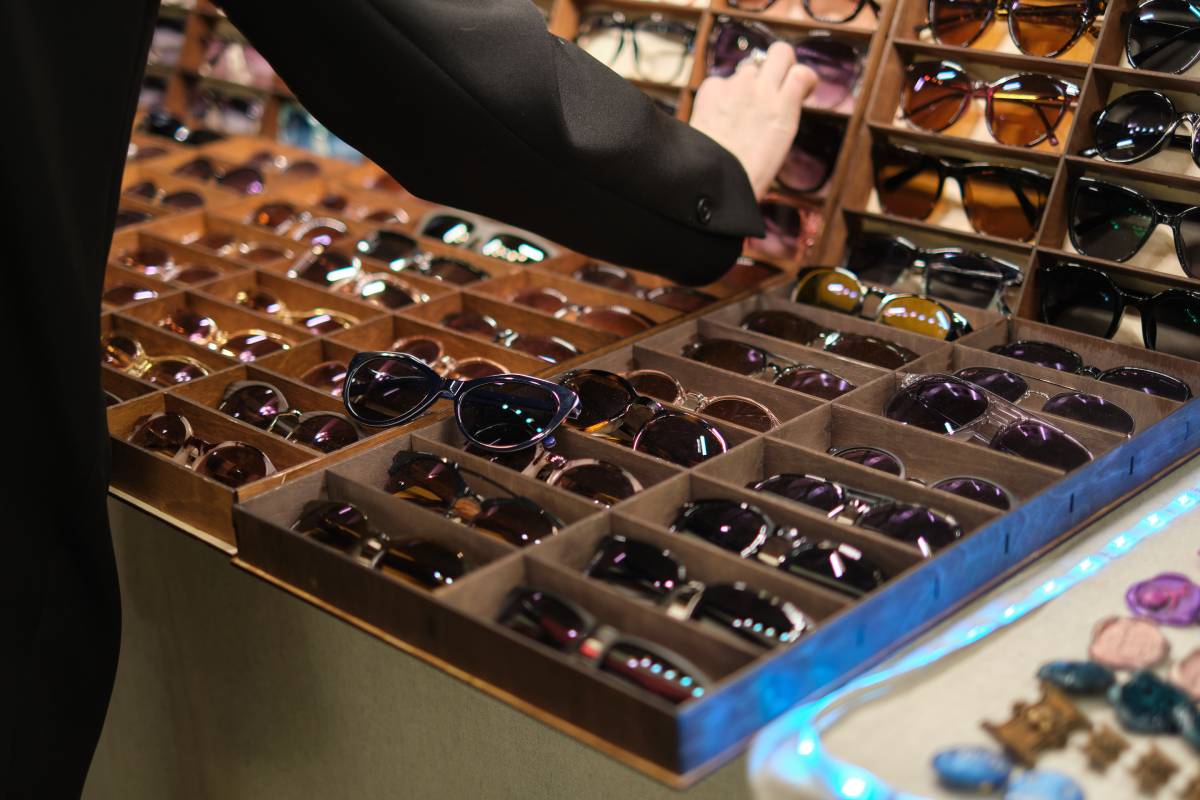
The main goal of summer is to stay cool and protect yourself from the strong sun. Stepping into bright sunlight can be challenging and may affect your vision and navigation. If you want to be comfortable in the sun, switching to polarized sunglasses is a great idea.
If you haven’t tried polarized glasses yet, it’s a good time to consider them. However, be cautious of counterfeit products in the market that can leave you feeling deceived. The best approach is to personally check the authenticity of the glasses. This article will guide you on how to determine if your sunglasses are polarized. If they aren’t, it may be worth discussing with your seller.
More to read: Does deodorant contain aluminium? Is aluminium in deodorant safe? Should you make the switch to aluminium-free deodorant?
What Are Polarized Glasses?
Polarized glasses, often referred to as sunglasses, are specialized eyewear designed to reduce glare and enhance visual clarity in various environments. These glasses have a unique feature that sets them apart from regular eyeglasses or sunglasses, making them particularly beneficial for outdoor activities.
The primary purpose of polarized glasses is to minimize the impact of glare caused by sunlight reflecting off surfaces such as water, snow, or roads. Glare occurs when light waves align in a way that intensifies brightness and reduces visibility. Polarized lenses contain a special filter that blocks these horizontally oriented light waves, allowing only vertically oriented light to pass through.
Imagine you’re outdoors on a sunny day, and sunlight reflects off a smooth surface like a lake or a car windshield. This reflected light can create a blinding glare, making it challenging to see clearly. Polarized glasses help combat this issue by selectively blocking the glare, resulting in a clearer and more comfortable vision.

The construction of polarized lenses involves a thin layer of special chemical compounds that are aligned to absorb horizontal light waves. This alignment process is crucial in achieving the desired polarizing effect. As a result, when you wear polarized glasses, you experience improved visual comfort and reduced eye strain, especially in bright, reflective conditions.
The benefits of polarized glasses extend beyond glare reduction. These glasses enhance contrast and provide better colour perception, making objects and details more vivid and distinct. This feature is particularly valuable for activities such as driving, fishing, skiing, or any outdoor sport where accurate vision is essential.
Polarized glasses are not limited to specific frame styles or shapes; they are available in a wide variety to suit individual preferences and fashion tastes. Additionally, many reputable eyewear brands offer polarized lenses in prescription glasses, catering to those who require vision correction while enjoying the advantages of polarized technology.
It’s important to note that while polarized glasses offer numerous advantages, they may not be suitable for all situations. For instance, pilots and skiers often avoid polarized lenses because they can make it challenging to differentiate between icy patches and snow. Similarly, LCD screens may appear distorted when viewed through polarized lenses. Therefore, it’s crucial to consider the specific activities and environments where you plan to use polarized glasses.
Detecting whether your sunglasses are polarized is a straightforward process that can be done with a few simple techniques. Polarized sunglasses offer various benefits, including reducing glare and enhancing visual clarity. Here’s a guide on how to tell if your sunglasses have this special feature:

- Check for a “P” or “Polarized” Label: Many sunglasses manufacturers label their polarized lenses with a small “P” or the word “Polarized” on the lens or frame. This is the quickest way to determine if your sunglasses have polarized lenses. Look for this marking, which is often located near the temple or on the lens itself.
- Use a Polarized Test Card or Sticker: Some sunglasses come with a polarized test card or sticker. When you look through the lens of this card or sticker, you’ll see a special pattern or image. If the lenses are polarized, the pattern will appear clearly; otherwise, it may be difficult to see. This simple test is a reliable way to confirm polarization.
- Observe LCD Screens: Polarized lenses can affect the visibility of LCD screens. Hold your sunglasses at a 90-degree angle to an LCD screen, such as a smartphone or a dashboard display. Rotate the sunglasses, and if the screen becomes darker or you notice a rainbow-like pattern, it indicates polarization. Keep in mind that this method might not work for all LCD screens.
- Look at Water or Glass Surfaces: Polarized sunglasses are highly effective in reducing glare from water or glass surfaces. When you’re near a lake or a car with reflective surfaces, put on your sunglasses and observe the change in clarity. Polarized lenses will significantly reduce the glare, allowing you to see through the water or glass more easily.
- Rotate the Sunglasses: Polarized lenses work by blocking horizontally oriented light waves. If you’re unsure whether your sunglasses are polarized, try rotating them while looking at a reflective surface. You should notice a change in brightness or intensity as you turn the sunglasses. This effect is a clear indicator of polarization.
- Check for UV Protection: Although not synonymous with polarization, many polarized sunglasses also provide UV protection. Look for a label or marking indicating UV protection, as this is a common feature in quality sunglasses. UV protection is essential for safeguarding your eyes from harmful ultraviolet rays.
- Consult the Manufacturer or Retailer: If you’re still uncertain about whether your sunglasses are polarized, check the manufacturer’s website or contact the retailer. Many brands provide detailed information about their products, including whether they incorporate polarized technology.
What are the Benefits of Polarized Sunglasses?
Polarized sunglasses offer a multitude of benefits, making them a popular choice for individuals engaged in various outdoor activities. These specialized eyeglasses are designed to reduce glare and enhance visual comfort in bright, reflective conditions. Let’s explore the key advantages of wearing polarized sunglasses:

- Glare Reduction: The primary benefit of polarized sunglasses is their ability to reduce glare. Glare occurs when sunlight reflects off surfaces like water, snow, or roads, creating intense brightness. Polarized lenses have a special filter that selectively blocks horizontally oriented light waves, effectively minimizing glare. This feature significantly improves visibility and reduces eye strain, making outdoor activities more enjoyable.
- Enhanced Visual Clarity: Polarized sunglasses enhance visual clarity by improving contrast and reducing haziness. The lenses selectively filter out scattered light, providing a clearer view of objects and details. This is particularly advantageous when engaging in activities such as driving, fishing, or sports where accurate vision is crucial for performance and safety.
- Better Color Perception: Polarized lenses enhance colour perception by eliminating the distortion caused by glare. Colours appear more vibrant and true to life, allowing wearers to experience a more vivid and enjoyable visual environment. This is especially beneficial for outdoor enthusiasts who want to appreciate the beauty of nature without the interference of glare.
- Reduced Eye Strain: Prolonged exposure to glare and bright sunlight can lead to eye strain and discomfort. Polarized sunglasses help alleviate these issues by minimizing glare and providing a more relaxed viewing experience. Whether you’re driving for an extended period or spending a day at the beach, polarized lenses contribute to reduced eye fatigue.
- Improved Safety While Driving: Driving in bright sunlight can be challenging due to glare from the road surface and other vehicles. Polarized sunglasses significantly improve road visibility by reducing glare and enhancing contrast. This, in turn, enhances safety on the road by allowing drivers to see obstacles, pedestrians, and potential hazards more clearly.
- Ideal for Water and Snow Activities: Polarized sunglasses are particularly popular among water and snow sports enthusiasts. When sunlight reflects off water or snow, the resulting glare can be intense. Polarized lenses cut through this glare, enabling a clearer view of the water’s surface or snowy terrain. This is especially valuable for activities like fishing, boating, skiing, and snowboarding.
- Versatility and Fashion: Polarized lenses come in various styles, shapes, and colours, providing a wide range of options for fashion-conscious individuals. Whether you prefer aviators, wayfarers, or sporty frames, you can find polarized sunglasses that not only enhance your vision but also complement your personal style.
- Protection Against Harmful UV Rays: Many polarized sunglasses also offer protection against harmful ultraviolet (UV) rays. Prolonged exposure to UV radiation can contribute to eye damage and increase the risk of cataracts and other eye conditions. Polarized sunglasses with UV protection help shield the eyes from these harmful rays, promoting long-term eye health.
Conclusion
Ensuring the authenticity of your sunglasses, especially polarized ones, is essential for enjoying the benefits they offer. Whether utilizing the individual inspection method, comparing two pairs, or understanding the advantages of polarized lenses, taking the time to verify your eyewear can greatly enhance your comfort and vision, particularly in the face of bright sunlight and reflective surfaces.
Choosing genuine polarized sunglasses not only reduces glare but also contributes to a more enjoyable and stress-free experience, allowing you to appreciate the surroundings without the discomfort of squinting.
So, whether you’re an outdoor enthusiast or someone who values clear vision, investing in authentic polarized sunglasses is a decision that pays off in terms of eye protection and visual comfort.

